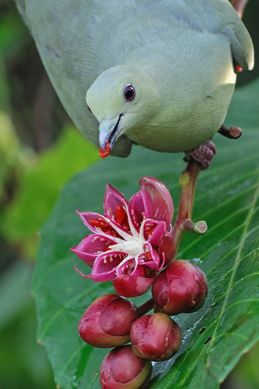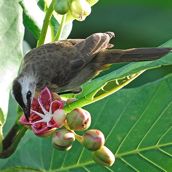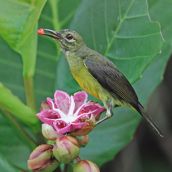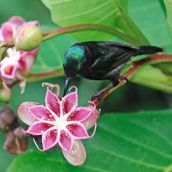Mark Chua a.k.a. Cajuca was at the Sungei Buloh Wetland Reserve on the morning of 20th January 2009 when he came across the Pink-necked Green Pigeon (Treron vernans) feasting on the seeds of dillenia or simpoh air (Dillenia suffruticosa) (left).
The ripe fruit, when it splits open in the early morning to expose the succulent red seeds, attracts plenty of birds. It is indeed the “early bird that gets the worm” as the seeds do not remain on the fruit for long. By late morning only the “shell” of the fruit is left.
The four red “buds” below the fruit are actually developing fruits, easily mistaken for flower buds. The persistent sepals that enclose the developing fruits will eventually unfold when the fruits mature, to display the red seeds.
The flowers of the plant are just as attractive – with yellow petals.
Subsequently, Mark photographed the Yellow-vented Bulbul (Pycnonotus goiavier) (below left), Brown-throated Sunbird (Anthreptes malacensis) (below centre) and Purple-throated Sunbird (Nectariniua sperata ) (below right) also relishing the seeds.













One Response